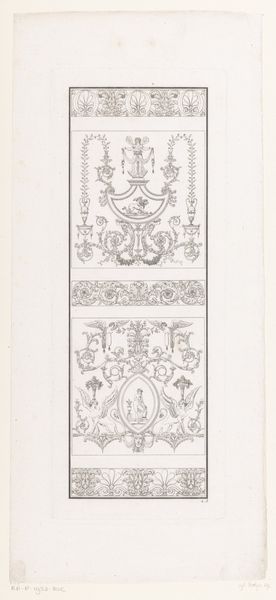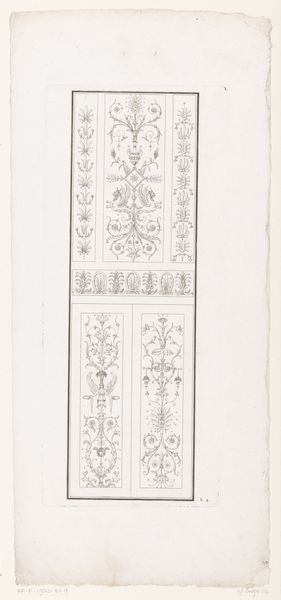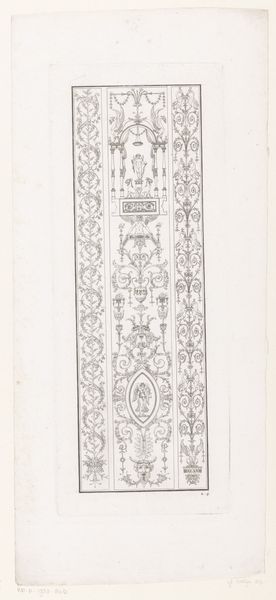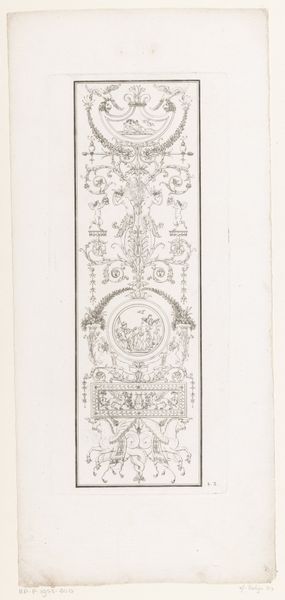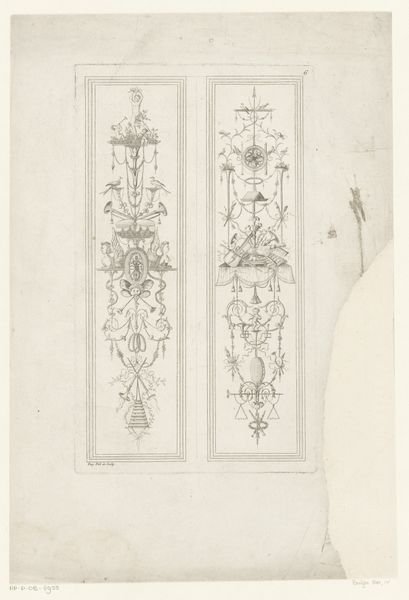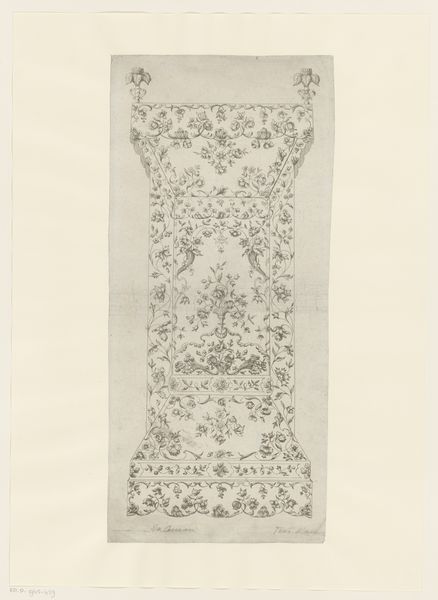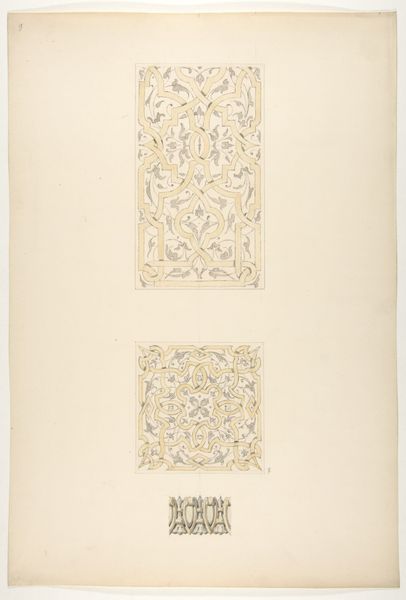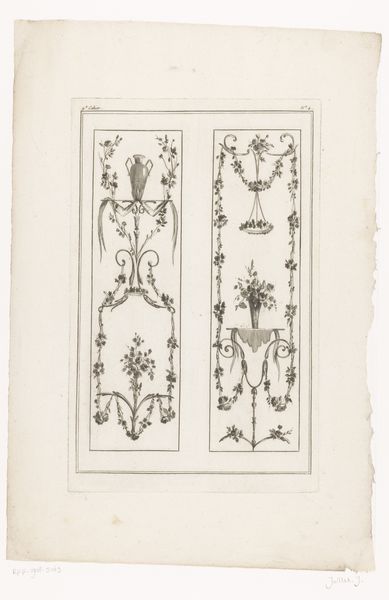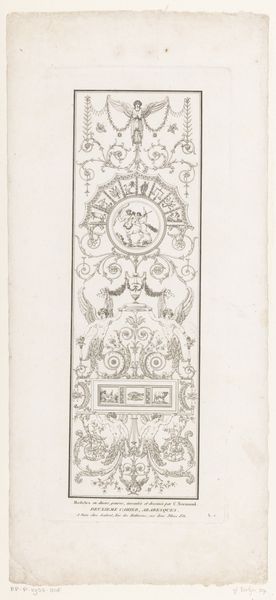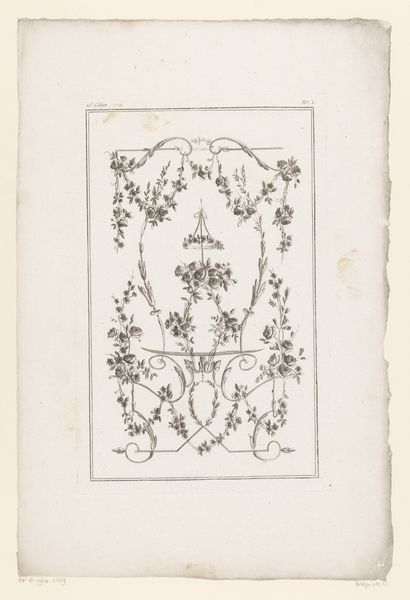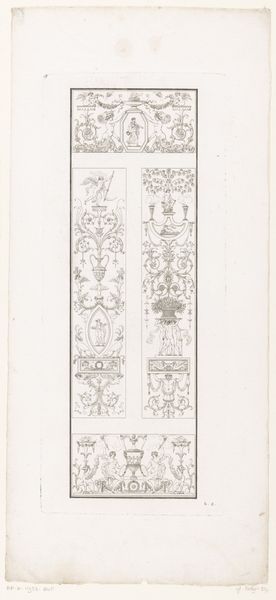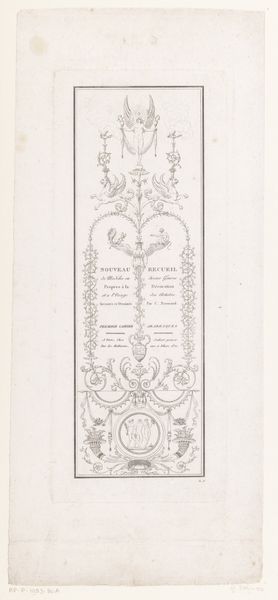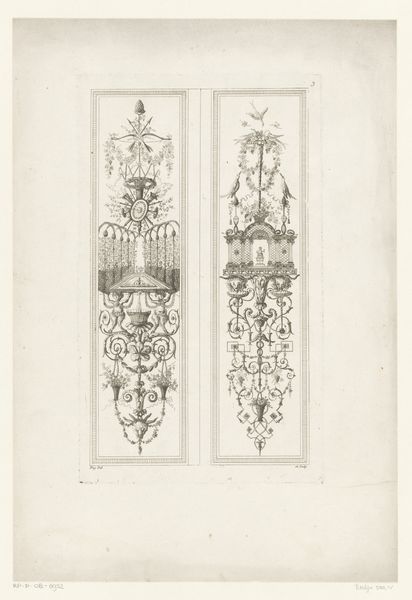
drawing, print, engraving
#
drawing
#
neoclacissism
#
allegory
# print
#
geometric
#
line
#
decorative-art
#
engraving
Dimensions: height 361 mm, width 139 mm
Copyright: Rijks Museum: Open Domain
Curator: At first glance, this artwork appears very decorative, even architectural in its detail. Editor: Yes, and it’s incredibly ornate. Almost dizzying with the sheer amount of detail packed into a fairly narrow vertical format. I'm immediately struck by its precision and the classical motifs. Curator: Indeed. We're looking at "Arabesken met adelaar en engelen," or "Arabesques with eagle and angels," an engraving by Charles Pierre Joseph Normand, created in 1803. Editor: 1803… which places it firmly in the Neoclassical period. Knowing that, all the Roman-inspired elements click into place. But the context intrigues me. What purpose did this print serve at the time? Curator: Given its delicate line work and the medium—engraving on paper—it likely served as a template for artisans. Imagine these designs adorning furniture, plasterwork, or even textiles. We must think of art not just as precious object but useful form that transfers craft skills between workshops and contexts. Editor: Ah, so less fine art and more…applied art? A manual for decoration, influencing the visual culture through craft and dissemination. Were these kinds of engravings common? How widely would they circulate? Curator: Mass reproduction via print was definitely ascendant. And Normand was tapping into a real market for designs. Consider also the political landscape of the time. The Napoleonic era saw a conscious revival of classical imagery as a form of legitimization of power, as symbols of empires gone and new. Editor: So, these motifs weren’t just aesthetic choices; they were politically charged visual statements adapted to craft, asserting authority through association? Curator: Exactly! This isn't merely a decorative frieze; it’s a carrier of cultural and political ideas. It reflects both aspirations and manufacturing processes in the age of revolutions. Editor: Fascinating. It’s made me reconsider how something that seems purely decorative can hold such significance in its historical and material moment. Curator: Yes, and hopefully encourages one to look deeper into art's production as both expression and industrial strategy.
Comments
No comments
Be the first to comment and join the conversation on the ultimate creative platform.
